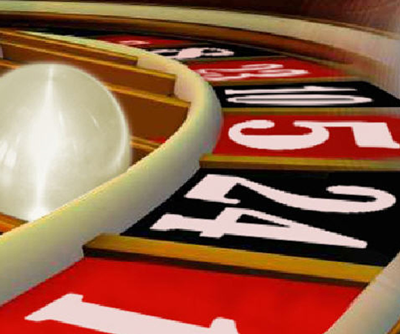Category Archives: The Survival Guide
Pulling An All Nighter- Dealing with Sleep Deprivation Naturally
Being expected to work all night without complaint is commonplace, in the freelancing industries. To make things worst, producers expect you to perform as well during your 20th straight hour, as you did on your first. But how do we make that happen?
THE SOLUTION- Be prepared physically before it happens.
What is Sleep Deprivation? “We have no idea what chemicals are produced by the body, during sleep, that make us feel rested.” explains Dr Thomas Devlin, Chief of Neurology at Erlanger Medical Center in Chattanooga, TN. “If we could identify what that compound was, we would be able to synthetically reproduce it and create a pill that people could take to make them feel rested. The best solution to sleep deprivation is to be physically prepared for it, or avoid it all together”.
STEP 1- Live a healthy lifestyle.
Exercise, making sure you are not overweight, not smoking and generally live a healthy lifestyle, will all contribute to make a sleepless night less exhausting. Also by simply adding a multi-vitamin and fish oil to your daily regimen will get remarkable results. Nothing else is really needed. Just like a soldier going into battle, a strong body will produce better results.
STEP 2- Hydrate and Caffeinate. Everyone knows caffeine can give you that boost you’ll need, but few understand that it is also a strong diuretic. Drinking too much coffee will dehydrate you, which in turn will make you feel tired. I suggest drinking one glass of water for every one cup of coffee. If you notice that you are drinking coffee but your eyes are particularly tired, it is because you are very dehydrated. Drink a couple glasses of water and that tired feeling will go away.
STEP 3- Exercise while working. Even 5 minutes of jumping jacks, push ups or any exercise that brings your heart rate up will have measurable results when you have hit the wall.
STEP 4- The Power Nap. When you sleep normally, it takes about 3 hours before we go into deep REM sleep which revitalizes the body. But when the body is exhausted, it kicks in to REM sleep almost immediately. A 15 minute power nap will have more effect than 3 hours of normal sleep. It’s best to nap about six or seven hours before you would normally go to bed. If you must take a late nap close to bedtime, make it a short one.
Step 5- Keep Your Brain Active- When you have hours of mindless work, turn on a movie, listen to music, play a podcast, talk with someone or do anything else you can to keep your mind alert. Day dreaming will turn into night dreaming and soon you may find yourself waking up on your keyboard with no idea how long you’ve been out.
Step 6- Don’t Eat, Graze. Large meals will cause blood sugar levels to peek and crash. Instead have small meals, every two hours. This will keep your blood sugar levels even and make your more alert.
Step 7- What About Energy Drinks- Don’t think energy, think Vitamin B intake. A simple B complex tablet, a 5 Hour Energy or other power drinks that are vitamin based are best. I find the weightlifter supplement N.O.-Explode works best for me. Not only does it fill the blood stream with a proper amount of vitamin B which invigorates me, but it also clears my head and makes me think better. Be certain to follow the manufacturer’s dosing instructions. Too much can make you jitter like too much coffee.
THE BEST SOLUTION- Avoid It- Make it clear to clients not only what your hourly rate is, but also that your rate turns into overtime after 10 hours and double time after 12 hours. When you have completed 10 hours of work, inform your client that you are going into overtime and ask them if you can continue working. Do the same at 12 hours. Company’s that work you overtime but do not paid OT are usually the same companies that pay late or never at all. Companies that asks you what your day or weekly rate is, are telling you in advance, expect to be treated poorly.
How To Get Paid, Not Played
 There is nothing more frustrating than working and not getting paid.
There is nothing more frustrating than working and not getting paid.
The Solution- Prevent problems before they happen. Several ways to do this include:
Get a deposit– Before you start a new project, make sure to require a 50% deposit in advance to begin production. When a client has paid a deposit, you will get their attention throughout the whole project, because they have a vested interest to complete the project and get their money’s worth. A client who has not paid a deposit can walk away at any time without loosing anything. GET A DEPOSIT!
Define The Project Up Front– Be sure to define what the job is on your invoice, so that if the client adds work to the project it is understood that would require additional payment. When additions to the project crop up, follow up with an email which explains the additional costs and get the client to respond to that email before starting work on the changes.
Have a written contract for every job. Many artists do not feel comfortable asking for contracts, but it is the best way to avoid problems in the long run. It is important to define the work going to be performed completely, delivery dates and payment terms. If you can not get the client to sign a contract, at least get them to reply to an emailed deal memo which describes all the details.
Make your invoice complete- Many times large corporation will delay payment and after 30 days by suggesting invoices were not complete. Be sure to give all your invoices a number. Include your name as you would want the check to read, mailing address and social security number, and be very clear as to the payment terms.
What To Do When Things Go Bad
The best practice is to talk to the client first before taking any legal actions. Many times a client is dealing with cash flow issues and needs to be paid by their client before they can pay you. Making statements like “that’s not my problem” will get you no where. Revealing your own personal problems as a reason your client needs to pay you will encourage that client to lose respect for you as well. It is best to ask the client what their situation is and ask the client when they can pay you. Being patient will usually resolve the problem and build your relationship with that client. Remember you want as many long term clients as possible, so it is important to be as flexible as possible.
Small Claims Court– When all else fails, small claims court is always an option, but never your best option. Winning your case does not mean the court system will act as your collection agency to collect the funds.
Labor Board– Regardless of whether or not you have signed an independent contractors agreement or not, many state laws say that if a client requires you to work at their facility, gives you specific hours to work and provides you equipment to do the job, legally you are their employee and the Labor Board will stand up to protect you including getting you interest for late payments.
Deduct it- If you have exhausted every avenue and still have not gotten paid, you can write the bad debt off your taxes as a bad business debt. For more information see http://www.irs.gov/publications/p535/ch10.html
Do you have any other suggestions on how to get paid? Write it in a comment below.
FEAST OR FAMINE- Learning How To Ride The Freelance Wave Part 5- BREATHE
I remember the first year I began freelancing. The phone was always ringing with more work than I could take on. I was always working two jobs, and the money was just rolling in. I was invincible! I was finally a success!
When July came, the calls for work just stopped and suddenly everything came to a screeching halt. I thought that I had done something wrong. Maybe there really was a “Black List” and somehow I was on it. I worked all day and all night looking for new work with no results. I couldn’t sleep and my nerves were shot. This lasted for 6 weeks.
And then suddenly, the phone rang and I was back to work. Driving into my new job, there was only one thing I could think about. How completely exhausted I was. After 5 months of double shifts and 6 weeks of panic, I never took a break to refresh my batteries.
The Solution- Don’t forget to Breath.
After an intense work schedule it can be challenging to just relax and decompress. You may experience an urge to jump right in and start searching for your next job. It is important to understand that your mind and body need a moment to recover.
Between jobs, I find the best way to recover, is by doing some type of physical activity that requires my mental attention as well. When I am not working, I like to do martial arts. I always go into a session feeling stressed and exhausted. But I always come out feeling relaxed and rejuvenated.
Find something that can help break the spell and take you away from the frustrations we all encounter as we live the freelance life. Sports, museums, travel or any other activity that requires both body and mind, will help to restore your strength and will get you prepared mentally for your next freelance challenge.
Remind yourself that the phone can ring at anytime and when that happens, you’ll be back to the grind.
Allow yourself a moment to just breathe.
FEAST OR FAMINE- Learning How To Ride The Freelance Wave Part 4- BUDGETING FOR FREELANCERS
The freelance lifestyle, in its nature, is a series of constantly changing variables. Although you are presented with many freedoms, you are in control of very little. Many freelancers find it difficult to maintain a sense of stability in this ever changing environment. And the biggest problem seems to always be finances. How can you setup a budget when you have no idea what you are going to make?
The Solution- Rather than setting a budget for how you are going to spend your money, try focusing on how you are NOT going to spend money.
Step 1- Live Off Last Months Income- Setting up a budget based on what you made last month, immediately creates stability. Any checks you receive this month go into an envelope and do not exist until next month. You will not be tempted to spend what is not cashed.
Step 2- Start By Reviewing Your Expenses- If you can, never pay cash for anything. Instead, write a check or use a debit card. This will make it much easier to analyze where every dollar went. Start by make sure you have online banking. Each month, copy all your activity into a spreadsheet and break down all your expenses into 3 groups:
1) Reoccurring Monthly Expenses (rent, wireless, telephone, cable, internet, insurance)
2) Variable Monthly Expenses (food, gasoline, pharmacy)
3) One-Time Non-Essential Expenses (entertainment, clothes, music downloads)
Establish a budget for each of these categories.
Example: Reoccurring Monthly Expenses= $4500
Variable Monthly Expenses= $600
One-Time Non-Essential Expenses= What ever is leftover
Step 2- Get 4 Bank Accounts- Setting up 4 different bank accounts will make it easier to prevent yourself from over spending. You will need a business expenses checking account, a personal checking for reoccurring and variable monthly expenses, a second personal checking for One-Time Non-Essential Expenses (aka: walking around money), and finally a savings account for taxes.
All income made last month is deposited into your business expense account (used to fund current projects or invoices due). Once a month write a check to your personal checking to pay for your reoccurring and variable monthly expenses (rent, electricity, internet, cable, telephone, insurance). Next, deposit 10% of your income into a saving account to cover taxes. After review your personal spending in step 1, write a second check for your second personal account. This money will determine how large you will be living this month. It is almost always certain that this money will not be enough and you will be tempted to cut into your savings and business account. DON’T!!!
You will be surprised how many things we do not really need. Prevent overspending by carrying only 1 debit card from your personal spending account. NEVER carry a credit card or debit card associated with your business account, monthly expenses account or savings account. DO NOT link your personal spending account debit card with any other accounts. The more difficult you make it for you to touch your other moneys, the more peace you will have in the long run.
Step 3- Plan your social calendar. Last year, my six year old went crazy for Toys-R-US. He associated buying new things with happiness. So I created a theme for the summer “A Free Summer of Fun”. Everyday, we did something cool that cost me nothing. We went to the beach, story time at the local library, free soccer camp, art festivals, concerts in the park, movie night in the park, hiked in the mountains, free days at museums, kids-eat- free days at restaurants.
Open your local newspaper’s calendar section and make a monthly social calendar that will involves the most amount of fun for the least amount of money. If you’re a single guy, your girlfriend will love your ingenuity.
Next evaluate where all your expenses are going. During the famine times, most artists get killed by the unexpected or unknown expenses.
For example: Do you have a child in elementary school? There are a huge amount of birthday parties. A $20 gift to 4-5 parties per month adds up to over $1200 by the end of the year.
You need to work these extra expenses into your budget. By reviewing all your expenses on a monthly basis, you will be able to develop a realistic monthly budget and find it easier to work with.
Want more ideas about Surviving The Freelance Jungle? Sign up for our mailing list now.
FEAST or FAMINE- Learning How To Ride The Freelance Wave: Part 3- MIX IT UP WITH YOUR CLIENTS
On a recent trip to Las Vegas I watched a man playing roulette. On every spin of the wheel he placed $50 on the number 24. I asked him why he bet on only one number. He told me, “This way, I can play longer”. One time his number hit and he won $1750. For an hour more, I watched him continue to play the same number over and over, until eventually he went broke.
Many freelancers make the same mistake, choosing to work only in only one corner of the industry. Focusing strictly on film work, gaming, or commercials is great strategy when the work presents itself, but when it slows down, it’s easy to go broke waiting for the next job. If you don’t want to get stuck in the doldrums of the slow season you have to bet on more than one number.
The Solution- Diversify! For example, development of television pilots begins in January, so that’s when I take on most of my television VFX work. I start working on music videos in February as recording artists finalize their new albums, hoping to generate the buzz needed to attract audiences to their summer tours. Commercial work ramps up in September in preparation for the big holiday sales push. My corporate work gets busy in the spring as clients get ready for fall conventions.
By marketing myself to different clienteles throughout the year, I increase the chance of having work most of the time. I choose the Christmas and New Year’s season for a vacation, since everybody slows down over the holidays.
July is a great time to go to Vegas, just stay away from the tables.
For more ideas about Surviving The Freelance Jungle, sign up for our mailing list today.
FEAST Or FAMINE- Learning How To Ride The Freelance Wave Part 2- REFER A FRIEND

If you are a freelancer, you constantly suffer from the ups and downs of the freelance workflow. It seems that companies all want you at the same time or not at all. We drive ourselves into the ground taking every job available because we are afraid that if we turn a client down, that they will call another artist and you will never hear from them again. This is a valid problem, but it is also a problem that is easily controlled.
The Solution- Develop a small network of fellow artists that you can refer business to when you are overwhelmed. When a client calls and you are already booked, you can control who they hire by referring them to one of your friends. Start by talking with a few other artists and explain to them that recently you have had several clients that had called and you were not available. Ask them if they would be interested in getting referrals from you.
Get their cell phone numbers and explain to them that you will be referring clients to them. Be clear that you expect the same in return. Be very selective as to whom you choose. They need to be as good as you, but not much better. They should be a good replacement for you. I have lost many long term clients by referring them to artists whose skill level was far superior to mine. Try to keep the group small, 2-4 at the most. Keep in touch with them and stay aware of their availability. After you have referred a few jobs to them, drop them from your list if they are not reciprocating.
By developing a group of fellow artists, not only do you drive business to yourself when work slows down, but you will notice that your clients will call you first knowing that you are a source of information and a solution to any of their problems.
Got a question or topic you’d like to discuss? Email Mark at jungle@grvfxguy.com
FEAST or FAMINE- Learning How To Ride The Freelance Wave: Part 1- HOW TO PREVENT THE WAVE
 One of the biggest problems many freelancers face is either having too much work or no work at all.
One of the biggest problems many freelancers face is either having too much work or no work at all.
Many of us never look for a job until we find ourselves without one. Once we have finished a job we have one evening of glowing in the satisfaction, of knowing that we did a great job, followed by waking up to the shear terror of not knowing where our next check is coming from.
The Solution- As a freelancer you must keep a constant flow of self promotion going consistently throughout the year. Obviously it is impossible to create new promotional efforts when you are slammed with work, so the solution is to create and maintain a 3 month marketing calendar and produce at least 3 promotional emails in advance so that when you get slammed with work, you already have a database of HR people and materials which to send them.
Step 1- Create A Database of Employers- This is essential, because if you are limiting your job search to only job boards, you are missing the majority of work that is out there. So start by creating a list of every company you could potentially work for. To do this, search on Linked In for similar artists in your area. By looking at profiles of other similar artists, you can get a list of all companies that have recently hired them. When you feel you have a full list of all companies, pick up the phone and call them. Explain to the receptionist what you do, and ask who you should send your reel to, and be sure to get an email.. This is very easy, because they get these calls everyday. If your list of companies is short, (100 or less) you will not get effective results. You will need to continue your search or widen your area of interest. If you work in a certain field, ( e.g. film) try reaching out to companies who do television, music videos, corporate videos, architectural companies, theme park design, medical illustration, etc. Your list should be well over 750 emails. Currently I have 3700 in the Los Angeles area alone.
Step 2- Get a Bulk Email Program- A bulk email program will allow you to enter a database of email addresses into the program, either by typing them out seperately or importing a list. Push one button and the program will send one email out to all of your contacts.
Step 3- Design 3 Creative Emails- These emails should look more like ads then text messages. They should include informational copy, and images of your recent work. You should begin by designing a format for all of your emails. This format should include your name and contact information and specific places for type and photos to be placed. By creating the format, you will begin to “Brand” yourself. HR people will begin to recognize your emails, and you are well on your way to building a professional relationship with these people. Before you know it, you’ll become “That guy/girl who….” When a need arises, you have a better chance of them calling you first, before they pull out their stack of resumes. Send out one of these emails every 4-6 weeks and replace it with a new email when free time allows it.
Step 4- Write a simple “Available for Work” Email- A week or two before you finish a job, send this email out to all your contacts. This is what I call “Rustling the Bushes” When you rustle the bushes, 2 weeks later, the snakes come out.
If you like this post, please subscribe to our weekly newsletter for more exciting ideas. And please share with your friends










